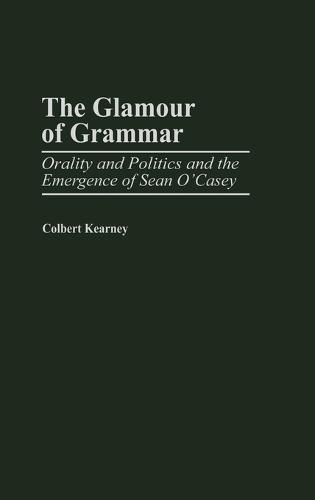Overview
Levels of education and, consequently, of literacy were low in the Dublin tenements at the beginning of the 20th century, and this facilitated the persistence of an oral tradition which stretched back for thousands of years. This book is an analysis of O'Casey's Abbey plays in the context of the oral culture in which they were set. Because they were powerless in a culture dominated by those who had reaped the advantages of education, the tenement dwellers were dazzled by the apparent magic of literacy and in awe of those who wielded its power. O'Casey uses this to dramatize the ease with which the poor were seduced into what he saw as a bourgeois revolution which brought them nothing but suffering and death. Although Sean O'Casey's Abbey playsThe Shadow of a Gunman, Juno and the Paycock, The Plough and the Stars—are universally admired for the richness of their language, this is the first authoritative analysis of the plays in relation to the linguistic and political culture at the turn of the century. Levels of education, and consequently, of literacy were low in the Dublin tenements and this facilitated the persistence of an oral tradition which stretched back for thousands of years. What might strike the modern reader as extravagant in the language of O'Casey's characters would be quite normal in an oral community where all communication was performative. Because they were powerless in a culture dominated by those who had reaped the advantages of education, the tenement dwellers were dazzled by the apparent magic of literacy and in awe of those who wielded its power. O'Casey uses this to dramatize the ease with which the poor were seduced into what he saw as a bourgeois revolution which brought them nothing but suffering and death. It is hardly surprising, then, that the villains in these plays are educated intruders who speak a language strikingly different from that of the tenement dwellers.
Full Product Details
Author: Colbert Kearney
Publisher: Bloomsbury Publishing Plc
Imprint: Praeger Publishers Inc
Volume: No. 92
Dimensions:
Width: 15.20cm
, Height: 1.20cm
, Length: 22.90cm
Weight: 0.411kg
ISBN: 9780313313035
ISBN 10: 0313313032
Pages: 160
Publication Date: 30 September 2000
Recommended Age: From 7 to 17 years
Audience:
College/higher education
,
Professional and scholarly
,
Undergraduate
,
Postgraduate, Research & Scholarly
Format: Hardback
Publisher's Status: Active
Availability: Manufactured on demand

We will order this item for you from a manufactured on demand supplier.
Reviews
O'Casey, like his characters, lived through the transition from ancient oral codes to those of a literate modernity. For him every word was not just a medium but an action, a register of moral growth and social meaning. Colbert Kearney's book shows that the writer was as much a poet as a playwright. Though wonderfully alert to the political forces at work in O'Casey's Dublin, Kearney convinces us that the plays will live by virtue of their style. His musical analyses of the great speeches remind us that it can still be a real adventure to explore the world of a writer through the nuances of language. O'Casey's defenders and detractors must now treat him as an artist or not at all. This is one of those rare, luminous studies which restores to a writer's work something of its original strangeness, before it became surrounded by polemic. -Declan Kiberd Professor of Anglo-Irish Literature and Drama University College Dublin
Author Information
COLBERT KEARNEY is Professor of Modern English at University College Cork./e He has published widely on Irish literature.




